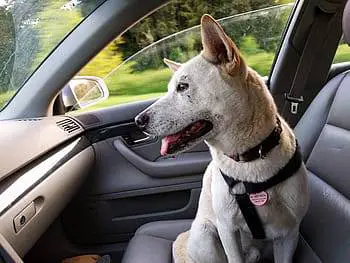Welcome to a sun-soaked season of ‘Summer Lovin’’ for your cherished pets! With years of expertise in pet care, our team is thrilled to share insights that have not only been proven through extensive research but have also been applied to our own furry friends.
We understand the nuances of ensuring that your pets not only navigate through the warm months smoothly but also thrive in them. Dive into a guide that’s crafted from a place of knowledge and genuine care, ensuring your pets experience summer with all the joy it should bring.
Keep Your Pet Hydrated.

It’s important to make sure your pet always has fresh water to drink even when they’re in the house. If possible, keep their water bowl filled and check for signs of dehydration throughout the day.
Dehydration is dangerous and can cause serious health problems if it’s not caught in time so make sure you know what symptoms to look out for. Pets can become dehydrated very quickly during hot days, especially if they are vomiting or have diarrhea because this causes them to lose even more fluids. The best way to prevent dehydration is by taking care of your pet on a regular basis – don’t wait until their health becomes compromised before doing anything about it!
It is especially important for pets who are elderly or overweight to stay hydrated because these animals are more likely to experience health problems due to severe overheating, which is why it’s important for pet owners to be aware of the signs of overheating in their pets.
Keep Animals Inside During Extreme Heat.
Make sure animals don’t overheat by keeping them out of direct sunlight for long periods of time and bring them indoors if you’re going to be away from home for more than a couple of hours.
Many animals are particularly vulnerable to the effects of heat. They do not perspire like humans; they cool themselves by panting and through their feet (via sweat glands). If it’s too hot for you, then it’s too hot for them.
If possible, keep animals inside during extreme heat. Fire hydrants/sprinkler systems help cool things down for pets outdoors by releasing water onto the ground. Check sprinklers daily to make sure they are working properly. Remember that concrete can get so hot it will burn paws and air conditioning is not always an option due to electricity costs. If you have no other choice but to leave your pet outside, provide lots of shade with a tarp or something similar and plenty of fresh water throughout the day.
If you’re going to be indoors with the A/C running, make sure that no part of your pet’s body is touching cold surfaces such as tile or concrete floors because they can become too cold and frostbite may occur.
Use Insect Repellent on You and Your Pet if they Go Outside.
It’s important to keep them safe from bug bites because they can make pets sick or cause an allergic reaction.
Make sure it is made specifically for animals and follow the directions on the label carefully. Keep in mind that some insect repellents are toxic for cats, so if you’re using one of those, make sure you only spray it on your hands first before petting your cat.
Watch for bug bites on both you and your pet. Keep an eye out for bug bites or any unusual signs of inflammation, especially if your pet goes outdoors. Insects are not only annoying but they can also carry harmful diseases so it’s important to be aware of what types of insects may be lurking around during the hot summer months.
If an insect bites or stings a person or animal, they might have transmitted diseases that affect pets too! Keeping pets indoors during sweltering heat is one way to prevent possible outbreaks but another method is using insect repellent on yourself and your pet before they go outside.
Don’t Leave Pets in a Parked Car.

Temperatures inside a vehicle can reach upwards of 160 degrees, which can cause brain damage or death to your animal in minutes.
Don’t ever leave animals in a parked car, even if the windows are partially open or it’s “just for a minute.” You never know when it will get too hot and the consequences could be fatal. A vehicle can act like an oven in summer, baking your pets alive. The temperature inside a vehicle can rise quickly to more than 40°C within minutes. It is unlikely that you will see any warning signs of distress until your pet is suffering from heatstroke (hyperthermia). Even with the car parked in the shade with windows slightly open, the temperature inside the car rises very quickly.
If you see someone leaving their dog or cat unattended in a parked car on a warm day, you may want to contact local law enforcement or an animal control officer for assistance. Never leave your pet in a parked car when it’s warm outside – even if the windows are partially open.
Not all cracked windows provide enough ventilation to prevent the suffocation of small animals.
Be Aware of Signs of Overheating in Outdoor Pets.
If you’re out and about with your pet, be aware of the signs of overheating in them.
Panting is completely normal, but if you notice excessive panting accompanied by glazed eyes, lethargy, difficulty breathing, stupor, or vomiting/diarrhea changes in an outdoor pet could be signs that they’re overheating and need help immediately. If necessary call your veterinarian or contact emergency services right away.
Check for Ticks, Fleas, and Other Pests on your Pet Regularly.
Summertime is the perfect time for fleas, ticks and other pests to thrive. Make sure you’re checking your pet regularly for any signs of infestation and treating them with an appropriate flea/tick medication if necessary.
Pets can get very ill from these parasites and some can even transmit serious diseases to both animals and people. So it’s important to be proactive in preventing and treating these issues before they become a problem.
If you find any unwanted guests crawling indoors with your pet, make sure to contact your veterinarian immediately because parasitic infestations can make outdoor pets very sick.
Limit Outdoor Activity During the Coolest Parts of the Day.
The coolest part of the day is generally early in the morning and at night, which is also the safest time to allow your pet outdoors. Try taking walks or playing outside during these times too.
Don’t take your pets out in the middle of the day when they’re most likely to overheat. Make sure they have shade to escape from direct sunlight and plenty of water to drink throughout the day. If it’s too hot for you outdoors, then it’s too hot for them outdoors. Forcing pets outside during extreme heat could be harmful or fatal so if possible, keep them inside during these times.
Exercise could result in increased panting and fluid loss. If you are going to be outside with your pets, always make sure they have plenty of freshwaters to drink. You should also try to stay in the shade as much as possible.
It is also important to keep in mind that excessive exercise could result in increased panting and fluid loss, so try to limit outdoor activity during the hottest parts of the day. Excessive panting, vomiting, and diarrhea are all signs that your pet may be overheating so if you notice any of these symptoms, bring them inside right away.
Watch Out for Hot Pavement.
When it’s hot outside, the pavement can get too hot for dogs’ paws and burn them. Try walking your dog during cooler parts of the day instead.
If it’s too hot for you to walk barefoot on it comfortably, then it’s too hot for them to walk on it comfortably. The pavement becomes dangerously hot even when the air temperature is mild, especially if there’s no shade in sight. Just because you would be able to walk barefoot on a sidewalk without burning yourself doesn’t mean that your pet can do the same thing. Stepping or laying down on very hot surfaces could cause severe burns and pain so take care when going outside with your pets and avoid asphalt or concrete whenever possible – especially during high heat days.
Give Them Cool Baths to Help Keep Them Cool.

One way to help keep your pet cool is to give them a cool bath. This can help lower their body temperature and make them more comfortable. You can also try spraying them down with cool water or using a fan to blow air on them.
Make sure the water isn’t too cold or it could cause hypothermia. If you’re using cold water, start with cooler water and slowly increase the temperature until it’s comfortable for your pet. You should also avoid using ice-cold water as this could cause hypothermia.
Be Careful with Pools.
Pets naturally love water so it’s important to keep pools fenced in and locked when not being supervised by an adult. Pets have been known to fall into open pools and drown because they didn’t know how to get out. Make sure there aren’t any strong currents that could sweep your pet away and never leave them unsupervised near a pool.
Even if your pet can swim, they can still get into trouble if they’re not familiar with the area. Many dogs will instinctively try to climb out of a pool but end up getting stuck because they don’t have the proper footing. Pools can be a fun place for pets to play but only when they’re properly supervised.
Conclusion.
Thank you for reading! I hope you found this article helpful.
By following these tips, you can help keep your pet safe and comfortable during the hot summer months. Be sure to take caution when outside and always monitor your pet for any signs of overheating.
By being proactive, you can help ensure that your pet has a safe and enjoyable summer!

Meet Brenda Tillman: your go-to expert in Cognitive Behavioral Therapy! Not only is she a seasoned therapist, but she’s also a passionate mom blogger who never misses a beat. Dive deep into her insightful blogs, backed by her extensive coursework in Parenting Skills, Learning, and Education. Brenda’s heartwarming family – a son, two daughters, and their adorable pets – often take center stage in her writings. From parenting hacks and relationship tips to health & fitness nuggets, Brenda has been enlightening her readers for over half a decade. Stick around, and you’re bound to discover gems from a mom who wears many hats with grace!
Reviewed By: Joanna Perez and Marcella Raskin
Edited By: Lenny Terra
Fact Checked By: Gabrielle J. Smith
Photos Taken or Curated By: Matthew Mansour